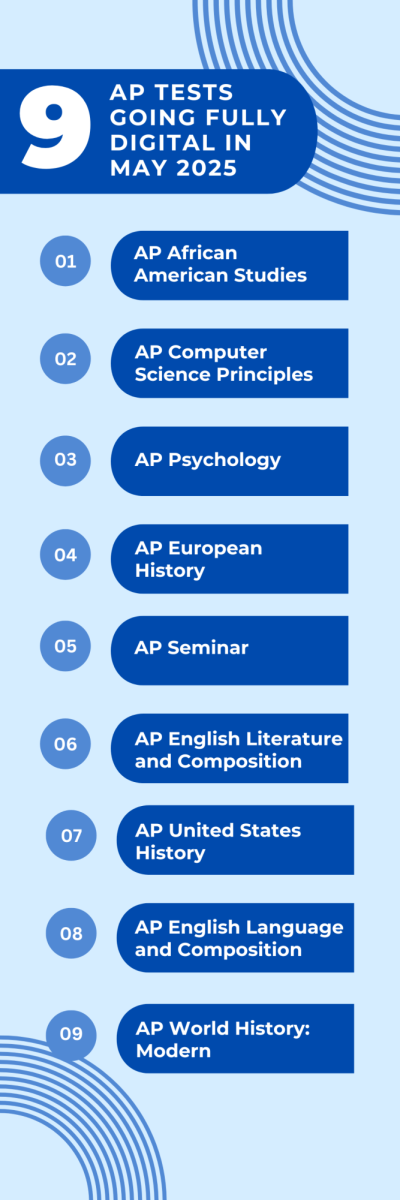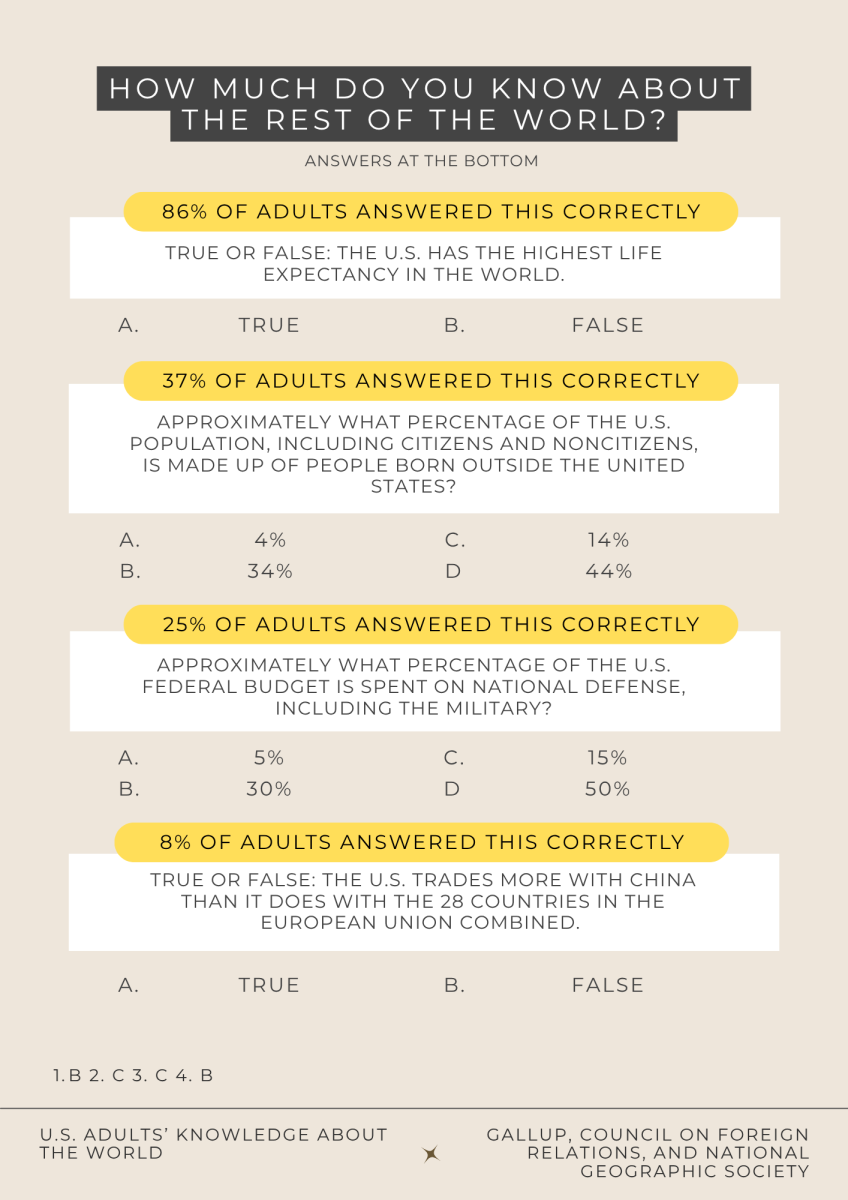Students once frantically flipped through packets to revisit passages, meticulously bubbled in answers and endured the familiar sounds of pencils scratching against paper as they raced against the clock to complete their standardized exams.
However, with the SAT transitioning to a digital format at the beginning of this year and nine AP exams slated to go fully digital in 2025, per the College Board, the strains of traditionally written exams begin to subside, paving the way for a new era of digital assessments.
In 2022 alone, the United States consumed approximately 65.76 million metric tons of paper with an increasing trend each year, according to Statista. A typical SAT booklet spans 60-70 pages and includes four different sections per person; with 1.9 million students taking the SAT in 2023, this amounts to roughly 570 metric tons of paper consumed by the franchise in just one year, per the College Board. However, with the shift toward digital testing, this significant paper waste is greatly reduced.
Beyond environmental concerns, digital testing eliminates handwriting challenges that affect both students and graders. Many AP exams require writing supplements in addition to multiple choice sections, demanding students to hand write multiple essays in just two hours. According to Ivy Tutors, typing responses would alleviate physical stress on students’ hands, which in turn would increase the legibility of their responses. Additionally, grading handwritten responses is time-consuming and may make readers prone to errors, leading to potential miscommunications and fairness issues in test results.
Some argue that the digital test will not allow students to annotate and highlight passages the same ways that the paper tests do. However, both the AP and SAT exams will include online highlighters and underline tools that can efficiently serve the same purpose, without the cumbersome process of flipping through paper booklets.
This efficiency of online testing even extends to result processing. The vast majority of AP exams are taken in the first two weeks of May, with results becoming available during the first week of June. SAT exams typically take two weeks to return scores due to manual processing and logistical challenges. This time accounts for institutions receiving the test, grading it and then individually processing the results. However, with digital testing, results can be processed much faster, allowing students to receive their scores sooner and improve their study habits, according to PrepScholar.
In a world where adaptability is key, the digital shift in standardized testing levels the playing field for all students. With new accessibility features such as text-to-speech and adjustable font sizes, the transition to these SAT and AP exams leaves the outdated paper exams practices in the past and embraces a more inclusive and efficient testing experience.









